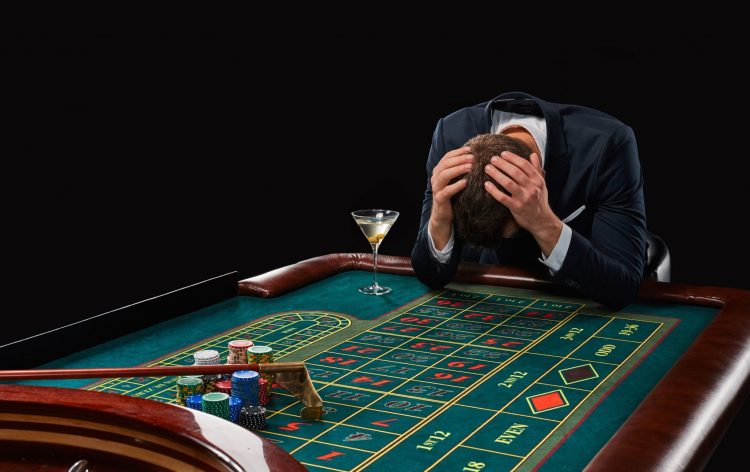Looking at gaming addiction from a scientific point of view

The gaming industry in itself is always a taboo topic to talk about, but no matter how many people avoid it, the companies offering games keep growing bigger and bigger.
In fact, in some countries, working in a casino or spending your whole day there, is considered prestigious.
No matter how destructive the activity turns out to be for the player they seem to keep going back to it no matter what. Scientists all over the world have been studying this phenomenon, by conducting tests. The tests usually involved letting people play a wagering game, while they observed on their facial expressions, post-game emotions, blood-pressure, heart-rate an all the other measurements that could potentially help scientists deduce the stress and feelings involved with gaming.
Unfortunately, not too much progress was made by this “surface testing” technique. However, thanks to our modern technology of tracking brain activity by scanning a person’s head while he or she is performing a specific action, is able to tell us what we need to know.
But what exactly are these scientists able to find out about the human mind, by just observing the activity?
Chemicals and brain activity
Most of the studies conducted about this topic happened in the UK, but there were other cases in Australia. It was most prevalent in these two countries as gaming was believed to be rampant. For example, the Canadian online casino games market has been booming ever since IGA 2001. Nearly 80% of the population had taken part in wagering activities one way or another. This, on the surface, looked like the best place to conduct research, but the UK had a lot larger percentage of addicts compared to Australia.
Therefore, Cambridge University was given the green light to conduct several tests on proven addicts as well as unaffected people. The research quickly found out that there are always major changes going on in the brain, before, during and even after the game has been played. Let’s break it down.
Research quickly found out that wagering games are designed to manipulate the human mind. To be more exact, no matter the outcome, the game will always force a person to produce some sort of dopamine. Dopamine is the chemical that usually indicates, pleasure happiness and comfort. It is one of the best chemicals to have during the day as it also affects the mood of a person, but what’s dangerous about it is that it is extremely addictive.
It has been found out, not only with gambling addicts but with drugs, smoking and drinking addicts that those specific activities tend to over-produce dopamine, which makes them so addictive.
The withdrawal effects are the aftermath of the dopamine mass production. At that point, the brain doesn’t gain the necessary (or the usual) stimuli to produce enough dopamine that the body is used to. Therefore this creates a sort of a deficit, leading to moodiness, physical pain, depression, and even suicidal thoughts.
The fact is that wagering games are able to pump that mass production up even further thanks to their design. The act of nearly winning and winning have been proven to produce the same amount of dopamine. Meaning that a near miss and a bullseye tend to make us equally happy.
Which part of the brain is active the most?
Cambridge University’s research quickly showed that there are specific groups of people who are more vulnerable to this addiction. These people are somebody who has some sort of mental or physical condition that hinders dopamine production in the brain. One of the most common cases have been found with patients with Parkinson’s disease.
Due to their disease not allowing the brain to produce enough dopamine to ensure functionality, the patients find an alternate method to boost their production through wagering. At that very moment, the most active part of the brain is the orbitofrontal cortex, which is located directly above the eyelids.
People with mental impairments have shown signs of damage to their judgment and risk-taking abilities after exposing this part of the brain to any type of additional dopamine influence. Even dopamine is not necessary to trigger these after effects. A patient in the University of Iowa, who was notorious with his questionable decisions in business ventures and personal relationships, had a tumor removed from the orbitofrontal cortex. After the operation, the patient fully recovered and was able to logically connect various scenarios.
According to DR.Clark from the University of Cambridge, damage to this region of the brain is exactly what contributes to the transition from gambling, to problem gambling (a.k.a addiction).
How is addiction classified?
Scientists usually divide gambling addiction into two groups. Near-miss addiction and Personal choice addiction. Both of them try to be self-explanatory, but they still come across as vague.
To simplify it as much as possible, Near-miss addiction is the brain reacting to almost winning the jackpot. As we’ve discussed previously in the article. It is able to produce as much dopamine as winning the jackpot would. It then contributes to the orbitofrontal cortex underperforming in its effort to control the risk-management and decision-making of the person. Later, this loss of control leads to problem gamblers betting more and more after a loss.
Personal choice gamblers are a different breed. They don’t rely on dopamine as much as near-miss gamblers. They try to correct previous mistakes, by winning back their losses. This is also due to the orbitofrontal cortex underperforming during the process. At that moment, the person does not understand that the best strategic play would be to get up and leave.
Furthermore, these types of gamblers justify the complete randomness of a game with desperate logic. For example, imagine the game is about the player moving from A to B, without falling in a pit.
He needs to move let’s say 5 steps to get to his destination. However, his path choices are limited. He can either take the road on the right, in the center and on the left, all of which lead to the same destination. The game is designed to apply RNG to a specific location on every step. If the player is unlucky, then they fall into the pit and lose the game.
The Personal choice gamblers are not able to see the complete randomness of this game and try to dissect it with logic. You’d mostly hear them say “Well, I went right last time and lost, so this time it’s definitely not going to be on the right, so let’s go right”. Needless to say, this logic is never successful. But the belief of learning the ropes of the game is what keeps them going.
Source material:
https://www.cam.ac.uk/research/news/the-psychology-of-gambling
































Comments (0 comment(s))